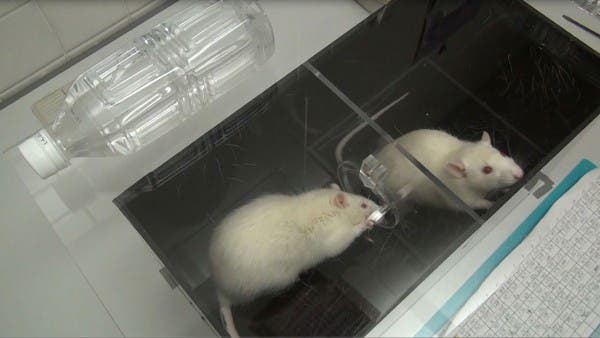We use the word “humane” to describe kind behavior and sympathy towards others, but the term might falsely lend some to believe that this is an exclusive human quality. Far from it. Rats too are kind, sympathetic and as “humane” as any human. For instance, when their peers are in danger of drowning, rats will come to their aid to save them. Even when a tasty treat, like chocolate, is offered instead the rat will most often than not choose to help his dying friend. To hell with chocolate!
In 2011, a study led by Peggy Mason at the University of Chicago, found that when rats were trapped inside a plastic narrow tube, friends would work their way until the cage was destroyed and the trapped rat freed. The findings served as a prime example of empathy among rats, but other researchers quickly pointed out that this is not necessarily the case. The rats were merely craving companionship, they argued.
A new study, this time performed at the Kwansei Gakuin University in Japan, debunks these concerns. The researchers build an experimental compartment divided into to boxes, with a transparent wall in between. One side was flooded with water, while the other was completely dried. In each box, a rat was placed. Rats can swim, but they sure as heck don’t like water. On dry land, the rat had a lever at his disposal which he could pull to open a small, previously blocked enclosure through which the drowning rat could escape.
The researchers report in the journal Animal Cognition that the rats would regularly come to the aid of their soaked peers, and those rats who had previously experienced “the other side” (rats would swap places) were much more quick and apt at opening the enclosure. “Not only does the rat recognize distress, but he is even more moved to act because he remembers being in that situation,” the researchers note.
In the second part of the experiment, the dry rats were offered two alternatives this time: they could open the hatch for their friends or open another door that led to another small enclosure filled with chocolate. Rats love chocolate as much as they hate water. The rodents chose to help their companions instead of going for the chocolate 50% to 80% of the time. This suggests that rats often resist the urge to fill their own belies to help their friends in need. Sometimes, though. Some rats were just jerks and went for the chocolate, but so do humans. Invert chocolate with money and soaked rats with bankrupt friends. Ok, maybe not the best analogy but you get the picture.
Though we’re very much different, rats and humans have a lot in common – in terms of emotions at least. Maybe because we’re both mammals. Most importantly, the findings suggest that empathy is biologically innate, and has less to do with religion, upbringing or schooling.
“Humans are not helping purely because mom taught us to help,” Mason says for Science. “In part—and to what degree remains to be seen—we help because it’s in our biology.”










